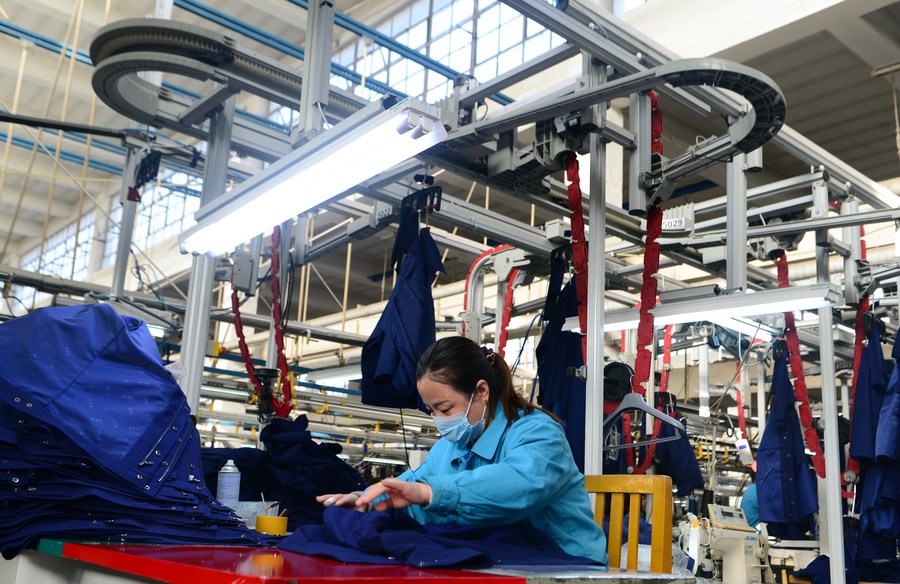China's manufacturing PMI edges down as holiday slackens activity
China's manufacturing activity expanded at a slower pace in February as the Spring Festival holiday during the period affected factory production and businesses, official data showed Sunday.
China's manufacturing activity expanded at a slower pace in February as the Spring Festival holiday during the period affected factory production and businesses, official data showed Sunday.

A worker operates on a production line at a garment factory in Jingxing County, Shijiazhuang City of north China's Hebei Province, Feb. 5, 2021. (Xinhua/Jin Haoyuan)
The purchasing managers' index (PMI) for China's manufacturing sector came in at 50.6 in February, edging down from 51.3 in January, data from the National Bureau of Statistics (NBS) showed.
The PMI for China's non-manufacturing sector also fell, edging down to 51.4 in February from 52.4 of January.
A reading above 50 indicates expansion, while a reading below reflects contraction. The data showed the manufacturing PMI remained in expansion zone for the 12th consecutive month.
The slowdown came as factory activity usually slackened during the Spring Festival holiday, which fell in February this year, according to the NBS.
The Spring Festival, or the Chinese Lunar New Year, fell on Feb. 12 this year. It is an important occasion for family reunions.
The sub-index for production stood at 51.9 in February, retreating 1.6 percentage points from a month earlier, while that for new orders dropped 0.8 percentage points to 51.5.
The new export order and import sub-indexes edged down to 48.8 and 49.6, respectively. The business expectation index for export enterprises came in at 60.8, which showed an optimistic outlook on foreign trade.
Due to climbing prices of global commodities, the index measuring purchase prices of major raw materials rose to 66.7, staying above 60 for the fourth consecutive month.
While big-sized companies reported stable expansion, medium- and small-sized enterprises had been more prone to the impacts of the holiday lull, with the PMI measuring their activity coming in at 49.6 and 48.3, respectively.
In a sign of confidence in post-holiday development, the business expectation index rose by 1.3 percentage points to 59.2 in February as companies looked forward to a pick-up in market demand.
The NBS also found more businesses reporting higher labor cost and a shortage of workers.
While the Chinese economy has withstood the virus test with a 2.3-percent expansion in 2020, factors of instability and uncertainty have increased globally and the foundation of China's economic recovery is yet to solidify.
Regarding this year's government work, China should strive to keep the economy running within a reasonable range, expand high-level opening-up, and maintain social harmony and stability to ensure that the 14th Five-Year Plan has a good start, according to a meeting of the Political Bureau of the Communist Party of China (CPC) Central Committee on Friday.
It emphasized better coordination between epidemic control and economic and social development, as well as continuity, stability and sustainability in macro policies.
Proactive fiscal policies should be more effective and sustainable, with flexible, accurate, reasonable and moderate prudent monetary policies, the meeting noted, underscoring strengthened job-first policies.

